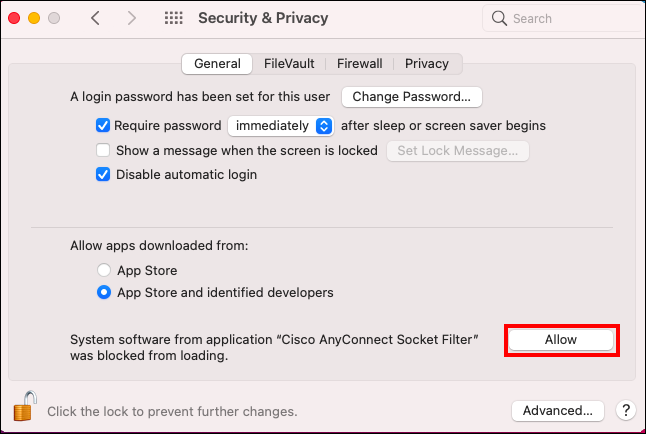I guess you are using anyconnect to connect to the Cisco VPN server. AnyConnect can also be used from Terminal. This works on macOS Sierra and AnyConnect 3.1.14018. The proprietary CiscoVPN Mac client is somewhat buggy. It is possible to use the IPSec VPN software included with Mac OS X instead. This tutorial shows you how to migrate from CiscoVPN to the native OS X IPSec VPN by decrypting passwords saved in CiscoVPN PCF files. Set up a VPN connection on Mac. To connect to a virtual private network (VPN), you need to enter configuration settings in Network preferences. These settings include the VPN server address, account name, and any authentication settings, such as a password or a certificate you received from the network administrator.
Starting with Mac OS X 10.6, it is now possible to connect to a Cisco IPSec VPN without having to download any extra software. Main Set Up Steps Before you begin please have your VPN IP address, your username, password, shared secret, certificate, and/or group name ready. Docker image to run an IPsec VPN server, with IPsec/L2TP, Cisco IPsec and IKEv2. Mellow is a rule-based global transparent proxy client for Windows, macOS.
Skip to end of metadataGo to start of metadataQ: How do I uninstall Cisco Anyconnect VPN Client on Mac OS X?
Cisco Vpn Mac Not Working
Answer
If the application is still installed do this:
- From the Finder go to the Application folder.
- Look for the 'Cisco' folder and open the folder
- Then double click on 'Uninstall Anyconnect' start uninstall process
- Follow instructions to uninstall VPN program
Here's the procedure for manually uninstalling the AnyConnect client from a Mac OS X system.

As root, run the following shell script from the Terminal:
$ sudo /opt/cisco/vpn/bin/vpn_uninstall.sh
You will be prompted for your password. Once you enter it, just follow the steps
If you still having trouble and/or the new Cisco Anyconnect installation complains that you have a version installed, follow these steps:
Enter these commands to clean out the old Cisco VPN kernel extension and reboot the system.
sudo -s
rm -rf /System/Library/StartupItems/CiscoVPN
rm -rf /Library/StartupItems/CiscoVPN
rm -rf /System/Library/Extensions/CiscoVPN.kext
rm -rf /Library/Extensions/CiscoVPN.kext
rm -rf /Library/Receipts/vpnclient-kext.pkg
rm -rf /Library/Receipts/vpnclient-startup.pkg
reboot
If you installed the Cisco VPN for Mac version 4.1.08005 package, enter these commands to delete the misplaced files. The deletion of these files will not affect your system, since applications do not use these misplaced files in their current location.
Cisco Vpn Mac Setup
sudo -s
rm -rf /Cisco VPN Client.mpkg
rm -rf /com.nexUmoja.Shimo.plist
rm -rf /Profiles
rm -rf /Shimo.app
exit
Enter these commands if you no longer need the old Cisco VPN Client or Shimo.
sudo -s
rm -rf /Library/Application Support/Shimo
rm -rf /Library/Frameworks/cisco-vpnclient.framework
rm -rf /Library/Extensions/tun.kext
rm -rf /Library/Extensions/tap.kext
rm -rf /private/opt/cisco-vpnclient
rm -rf /Applications/VPNClient.app
rm -rf /Applications/Shimo.apprm -rf /private/etc/opt/cisco-vpnclient
rm -rf /Library/Receipts/vpnclient-api.pkg
rm -rf /Library/Receipts/vpnclient-bin.pkg
rm -rf /Library/Receipts/vpnclient-gui.pkg
rm -rf /Library/Receipts/vpnclient-profiles.pkg
rm -rf ~/Library/Preferences/com.nexUmoja.Shimo.plist
rm -rf ~/Library/Application Support/Shimo
rm -rf ~/Library/Preferences/com.cisco.VPNClient.plist
rm -rf ~/Library/Application Support/SyncServices/Local/TFSM/com.
nexumoja.Shimo.Profiles
rm -rf ~/Library/Logs/Shimo*
rm -rf ~/Library/Application Support/Shimo
rm -rf ~/Library/Application Support/Growl/Tickets/Shimo.growlTicket
exit
Cisco Vpn Mac Free
Finally this.
sudo pkgutil --forget com.cisco.pkg.anyconnect.vpn
Cisco Anyconnect Vpn Client Macos
Cisco Vpn Mac Client
Labels:Macos Uninstall Cisco Vpn
